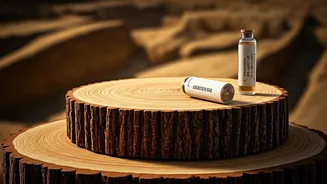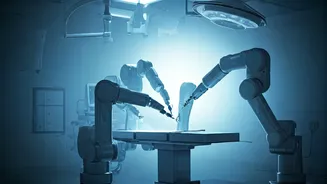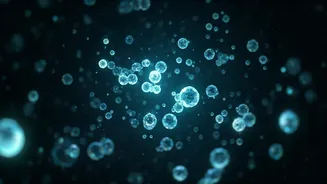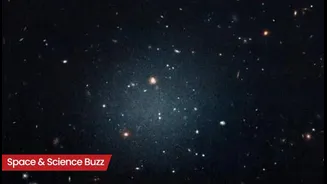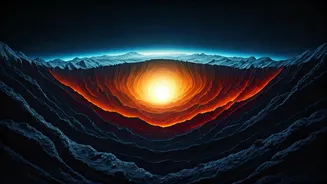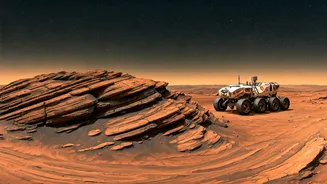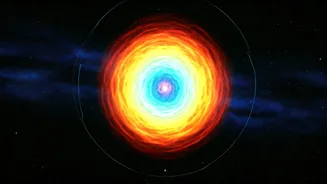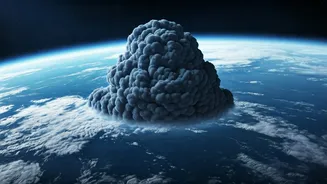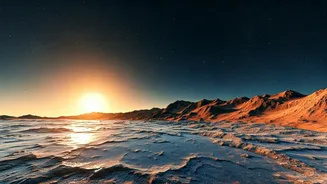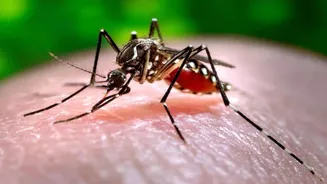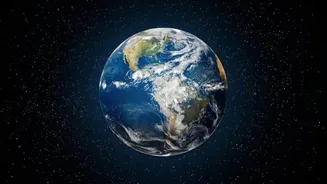Carbon's Radioactive Clock
Radiocarbon dating, often called carbon-14 dating, is a scientific method used to figure out how old organic materials are, such as wood, cloth, and bones.
It works because all living things take in carbon from the atmosphere, including a radioactive form called carbon-14. When an organism dies, it stops taking in new carbon, and the carbon-14 already present begins to decay at a known rate. Scientists can measure the amount of carbon-14 left in a sample and, from that, calculate how long ago the organism died. This process is possible due to the predictable half-life of carbon-14, which is approximately 5,730 years. This means that after about 5,730 years, half of the carbon-14 in a sample will have decayed. The dating process is very useful for archaeology and other fields because it gives researchers a way to put events in the right order and understand how civilizations evolved over time.
How It Actually Works
The process of radiocarbon dating involves several key steps. First, a sample of organic material is collected, carefully chosen to avoid contamination. Scientists then prepare the sample, often by cleaning it and converting the carbon in it into a measurable form, such as graphite or a gas. Next, they use specialized instruments, like a mass spectrometer or a liquid scintillation counter, to measure the amount of carbon-14 remaining in the sample. The measurement is then compared to the known decay rate of carbon-14. Based on the amount of remaining carbon-14, scientists can estimate the age of the sample, providing a date range within a certain level of accuracy. It is crucial to calibrate the radiocarbon dates against other dating methods, like tree-ring dating, to account for variations in the atmospheric carbon-14 levels over time, refining the precision of the age estimates.
Applications Across Disciplines
Radiocarbon dating is an indispensable tool in various fields. In archaeology, it helps date artifacts, human remains, and ancient settlements, offering valuable insights into past civilizations. It allows archaeologists to establish timelines and understand the development of different cultures. In geology and environmental science, radiocarbon dating is used to study the age of sediments, fossils, and organic matter in soil, providing clues about past environmental changes and ecological events. It also plays a key role in studying climate change, helping scientists understand past climate conditions by dating organic materials. Moreover, it is used in forensic science to estimate the age of human remains, aiding in investigations and providing crucial timelines for criminal cases. This versatility underscores its significance in enhancing our knowledge of the past and present.
Limitations and Challenges
While radiocarbon dating is a powerful technique, it does have limitations. It is most effective for dating organic materials up to approximately 50,000 years old, as beyond that, the amount of carbon-14 becomes too small to measure accurately. The accuracy of radiocarbon dating depends on careful sample selection and the avoidance of contamination. It is essential to choose samples that are free from external carbon sources. Also, the dates obtained require calibration, as fluctuations in the levels of carbon-14 in the atmosphere over time can influence the results. The accuracy and precision of radiocarbon dating also depend on the quality of the lab instruments. Despite these limitations, radiocarbon dating continues to be refined through advancements in instrumentation, calibration methods, and a deeper understanding of the factors that affect carbon-14 levels.
Future of Dating
The field of radiocarbon dating is constantly evolving, with ongoing efforts to improve its accuracy and extend its range. Researchers are exploring new techniques and technologies to enhance the precision of carbon-14 measurements. These developments include improving the instruments used for analysis and developing better calibration methods. There is also a continuous effort to refine the understanding of how carbon-14 levels have varied over time, allowing for more precise age estimations. These advances will improve dating methods, helping us better comprehend historical timelines. Through ongoing innovation, radiocarbon dating will continue to contribute significant insights to our understanding of the past and the challenges ahead.
